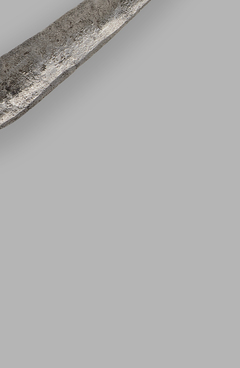Katana-style swords appeared in Japan in the 15th century. They were used until the end of the 19th century as a traditional weapon of the samurai, usually in combination with a shorter wakizashi. In many ways, a katana resembles an earlier Chinese sword “miaodao”.
In Japanese, the word “katana” has a broader meaning than in Russian. It can be used to refer to any saber, sword, or knife with a single-edged blade. The Japanese term for a katana is “nihonto” which literally means “a Japanese knife” or “a Japanese dao sword”.
The katana was always carried on the left side of the body with its sharpened edge facing up. The scabbard was thrust through a belt-like sash — an obi. These rules were formed after the end of the Sengoku period of warring states in the early 17th century. It was then that carrying a katana became more of a tradition than a necessity.
When entering a house, a samurai would remove the katana from behind his belt. A samurai could hold the grip with his left hand ready for battle or indicate his trust by holding the katana with his right hand. When sitting down, he would place the katana on the floor within reach, with the wakizashi still in place. The samurai carried the short sword in a scabbard behind his belt.
The production of Japanese iron swords began in the 8th century. The technology was perfected by the 13th century. For about a thousand years, the shape of the sword remained almost unchanged.
An authentic Japanese katana can be easily recognized by the hamon — a visible effect created by special forging and hardening techniques. Moreover, authentic swords have hilts covered with stingray leather and wrapped with silk ribbon. Carved hilts made of hardwood or ivory are only used in decorative and ceremonial swords.
A katana blade consists of at least two different steel grades: the inner core is made of softer steel while the blade is made of hard steel. Both components were first made clear of impurities by folding them back upon themselves many times and welding them before a blade could be forged.
The hilt and scabbard of
the displayed sword are decorated with carved ivory overlays and genre scenes in
silver rings along the scabbard’s entire length. The three circular overlays are
connected by a longitudinal overlay with two rings and a dragon’s head on the
ends.



